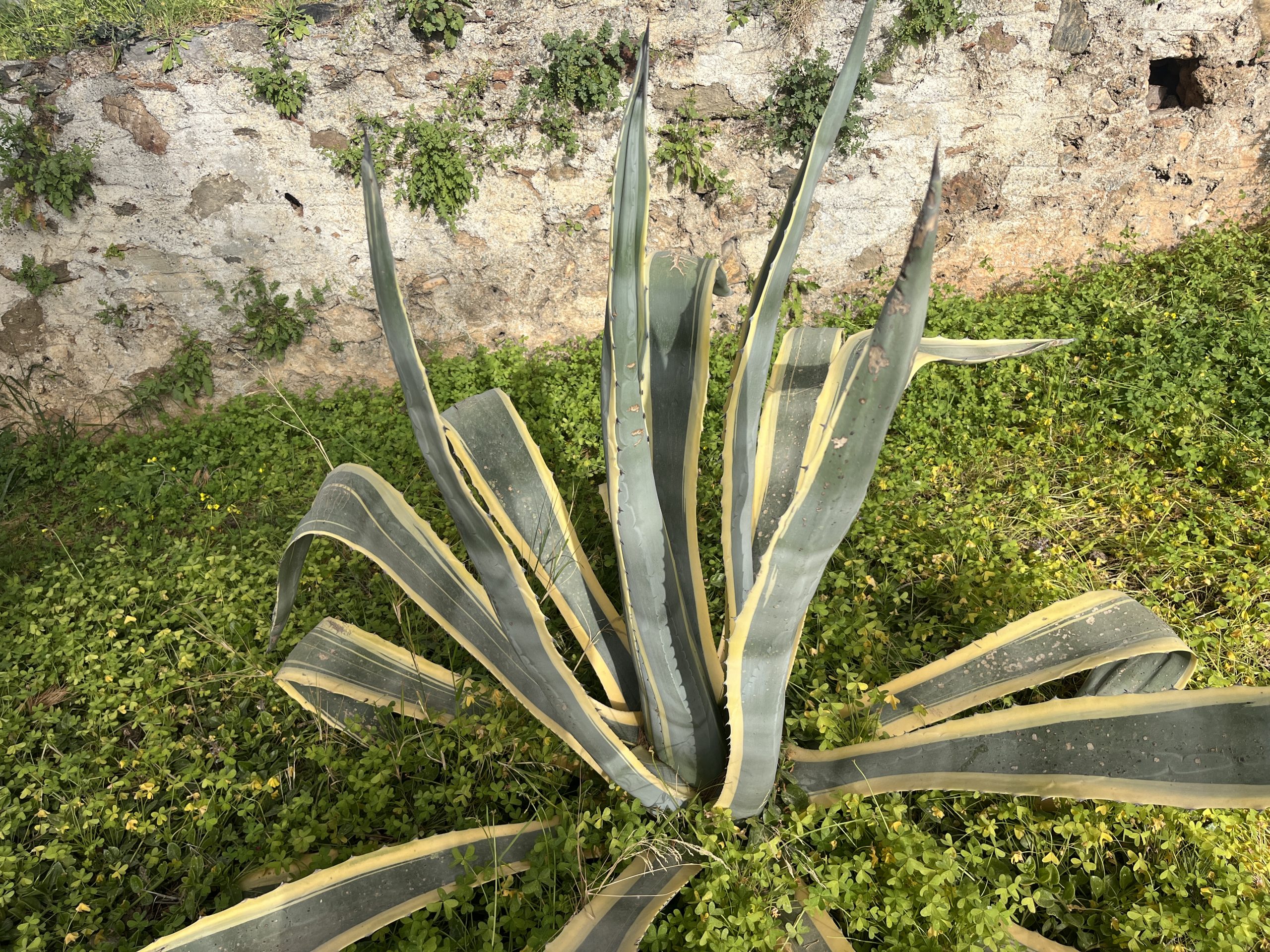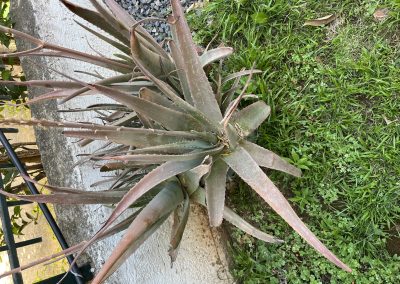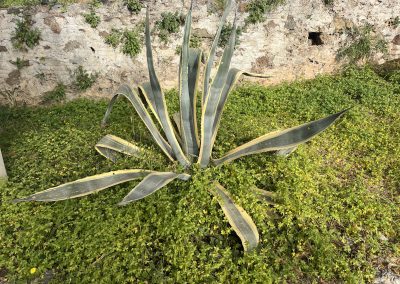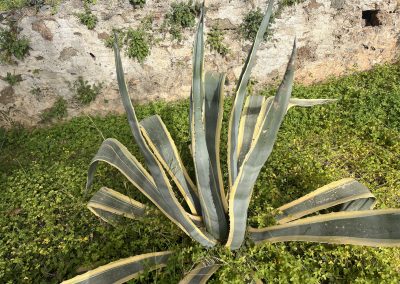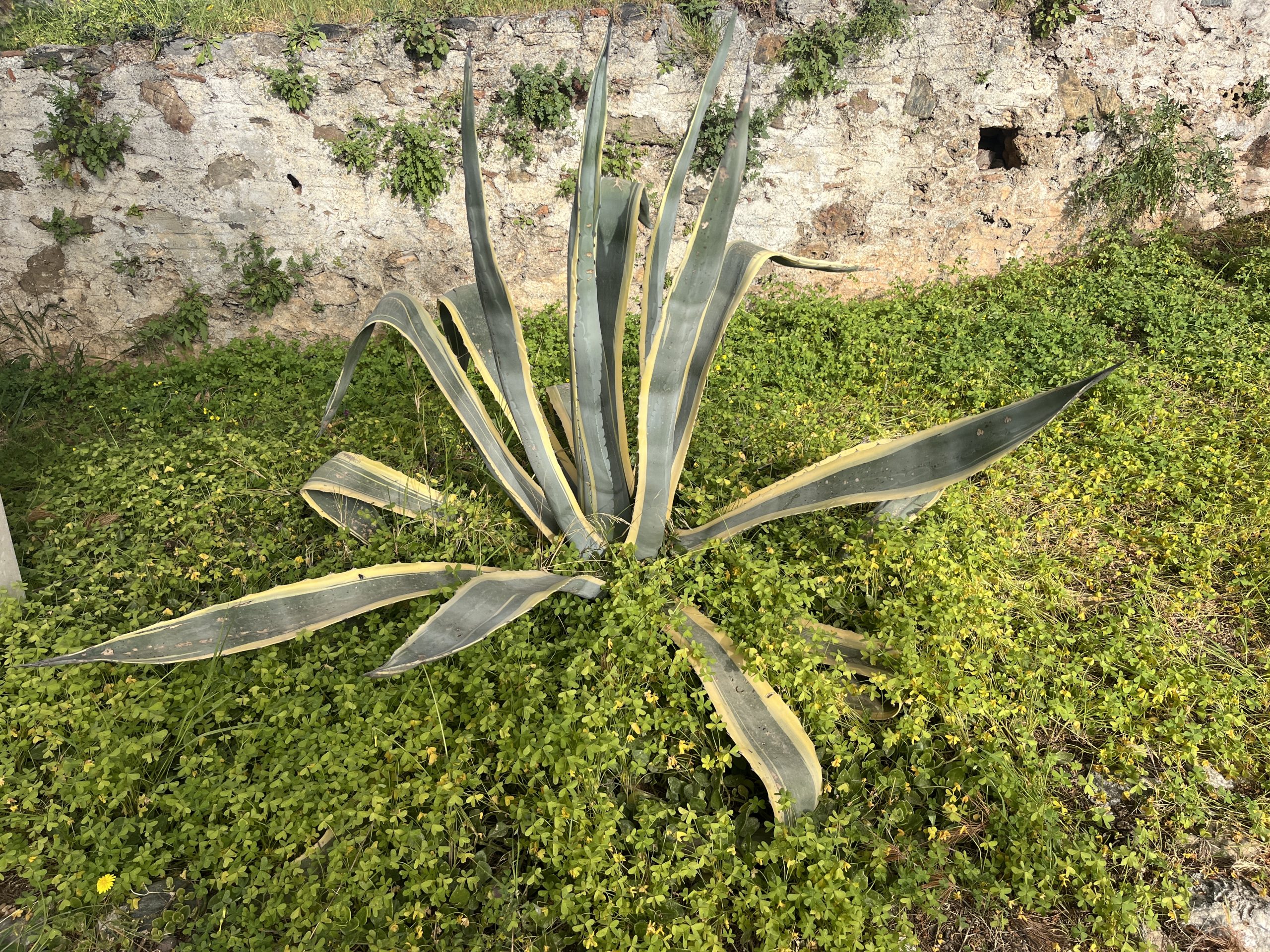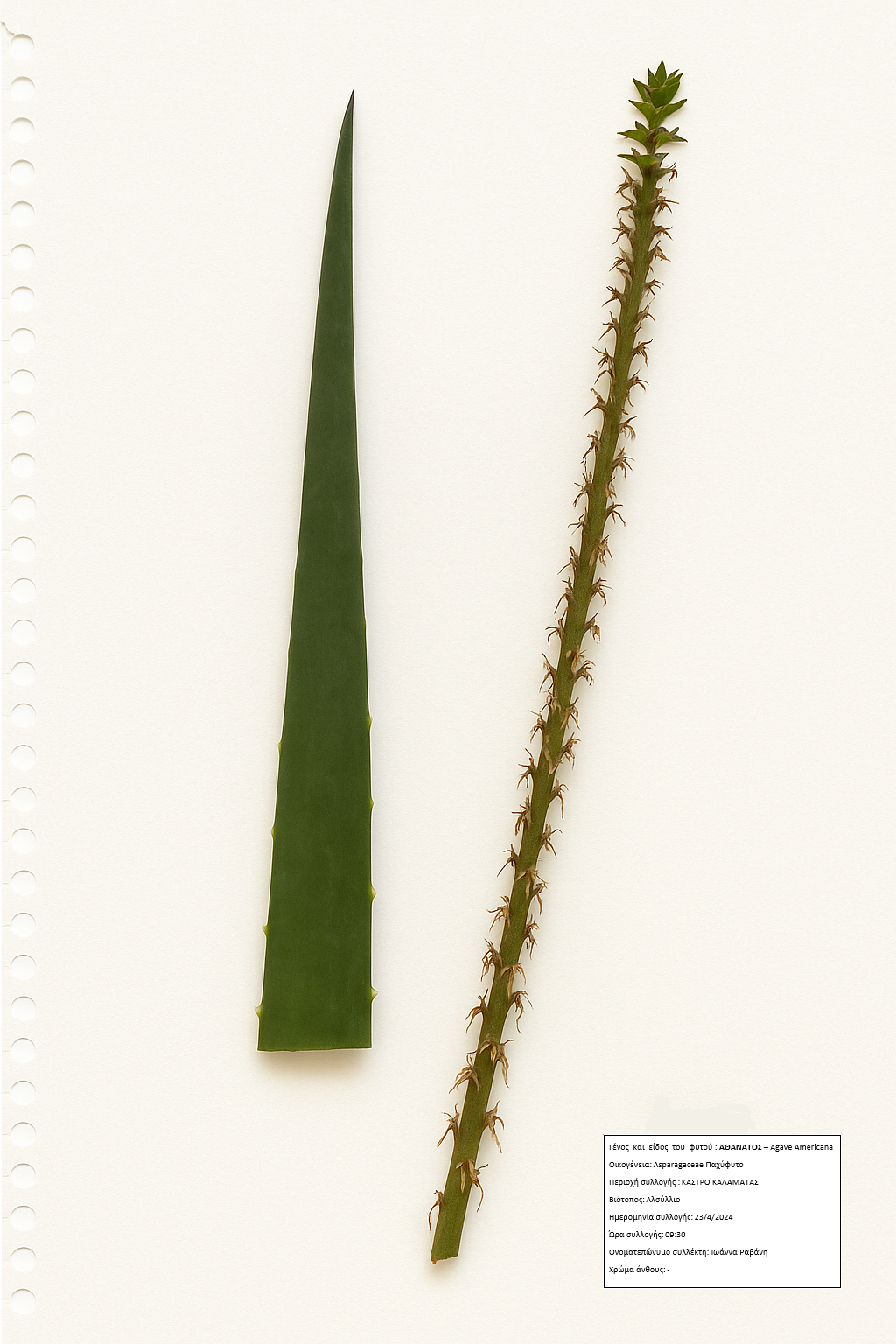Agave americana
Scientific description
Scientific name: Agave americana
Common name: Century Plant, American Aloe
Kingdom: Plantae
Phylum (Syntax): Tracheophyta
Order: Asparagales
Family: Asparagaceae
Genus: Agave
Species: Agave americana
Origin:
Native to Mexico and the southern United States, but widely cultivated around the world in arid and semi-arid regions.
Description:
Agave americana is a large, rosette-forming succulent with thick, fleshy, gray-green or variegated leaves that can grow up to 1.5–2 meters long. Each leaf ends in a sharp spine and has spiny margins. The plant is known for its dramatic flowering event, which happens only once (monocarpic), typically after 10–30 years, producing a tall flower stalk (up to 8 meters) before dying.
Propagation:
Primarily propagated through offsets (pups) that grow around the base of the mother plant. It can also be grown from seed, though this is less common due to the long lifecycle.
Ecology:
Adapted to hot, dry environments with full sun exposure. Drought-tolerant and prefers well-drained soils. Provides nectar for pollinators, particularly bats and insects, during flowering.
Usage:
• Ornamental: landscaping for dramatic form.
• Traditional: sap (aguamiel) historically fermented to make pulque.
• Fiber: leaves used for ropes and textiles.
• Medicinal: folk medicine, though raw sap can be irritating.
Notes:
Despite its name "Century Plant," it blooms in 10–30 years. Sharp spines and large size make it unsuitable for small gardens or high-traffic areas.
Επιστημονική ονομασία: Agave americana
Κοινή ονομασία: Αθάνατος - Century Plant, American Aloe
Βασίλειο: Φυτά
Φύλο (Σύνταξη): Τραχεόφυτα
Τάξη: Σπαράγγια (Asparagales)
Οικογένεια: Σπαράγγια (Asparagaceae)
Γένος: Agave
Είδη: Agave americana
Καταγωγή:
Ενδημεί στο Μεξικό και τις νότιες Ηνωμένες Πολιτείες, αλλά καλλιεργείται ευρέως σε ξηρές και ημίξηρες περιοχές σε όλο τον κόσμο.
Περιγραφή:
Μεγάλο παχύφυτο με φύλλα 1,5–2 μ. μήκος, σαρκώδη και γκριζοπράσινα ή ποικιλόχρωμα. Κάθε φύλλο έχει αγκάθι και αγκαθωτά περιθώρια. Ανθίζει μόνο μία φορά, μετά από 10–30 χρόνια, με ανθικό μίσχο έως 8 μ., και στη συνέχεια πεθαίνει.
Πολλαπλασιασμός:
Κυρίως μέσω οφθαλμών (κουταβιών) γύρω από τη βάση του φυτού. Επίσης με σπόρους, αλλά σπανιότερα.
Οικολογία:
Προσαρμοσμένο σε ξηρά, θερμά περιβάλλοντα, ανθεκτικό στην ξηρασία. Προτιμά καλά στραγγιζόμενα εδάφη. Προσφέρει νέκταρ σε επικονιαστές (νυχτερίδες, έντομα).
Χρήση:
- Διακοσμητικό (τοπιοτεχνία)
- Παραδοσιακό (χυμός για pulque)
- Ίνες (σχοινιά, υφάσματα)
- Φαρμακευτικό (λαϊκή χρήση, αλλά ο χυμός ερεθιστικός)
Σημειώσεις:
Δεν χρειάζεται 100 χρόνια να ανθίσει, αλλά 10–30. Το μεγάλο μέγεθος και τα αγκάθια το καθιστούν ακατάλληλο για μικρούς κήπους.
Nom scientifique : Agave americana
Nom commun : Century Plant, American Aloe
Règne : Plantae
Phylum (Syntaxe) : Tracheophyta
Ordre : Asparagales
Famille : Asparagaceae
Genre : Agave
Espèce : Agave americana
Origine:
Originaire du Mexique et du sud des États-Unis, mais cultivée dans le monde entier dans des régions arides et semi-arides.
Description:
Grande succulente en rosette, feuilles charnues, gris-vertes ou panachées, 1,5–2 m. Chaque feuille finit en épine acérée. Floraison unique (monocarpique) après 10–30 ans, avec tige florale jusqu’à 8 m, puis la plante meurt.
Propagation :
Principalement par rejets à la base de la plante mère. Aussi par graines (rare).
Écologie:
Adaptée aux climats secs et chauds, sols drainés, tolère la sécheresse. Source de nectar pour chauves-souris et insectes.
Usages :
• Ornementale (paysage)
• Traditionnelle (pulque)
• Fibre (cordes, textiles)
• Médicinale (usage populaire, sève irritante)
Remarque :
Ne met pas 100 ans à fleurir, mais 10–30. Trop grande et épineuse pour petits jardins.
Denumire științifică: Agave americana
Denumire comună: agavă americană, aloe americană
Regn: Plantae
Încrengătura (Sintaxă): Tracheophyta
Ordin: Asparagales
Familie: Asparagaceae
Gen: Agave
Specie: Agave americana
Origine:
Originară din Mexic și sudul Statelor Unite, dar cultivată pe scară largă în zone aride și semi-aride.
Descriere:
Plantă suculentă mare, cu frunze groase, gri-verzui sau pestrițe (1,5–2 m), terminându-se cu spini. Înflorește o singură dată, după 10–30 ani, tulpină florală de până la 8 m, apoi moare.
Înmulțire:
Prin pui la baza plantei; mai rar prin semințe.
Ecologie:
Adaptată la medii calde și uscate, tolerează seceta. Preferă solurile bine drenate. Furnizează nectar liliecilor și insectelor.
Utilizare:
● Ornamentală (peisagistică)
● Tradițională (pulque)
● Fibre (frânghii, textile)
● Medicinală (seva crudă iritantă)
Observații:
Nu are nevoie de 100 de ani să înflorească, ci 10–30. Dimensiunea mare și spinii o fac nepotrivită pentru grădini mici.
Creative writing inspired by Agave americana
Agave americana — The Immortal
Once upon a time, the Immortal was not just an ordinary plant but a mighty warrior, known for his immortality. He was Thanatos, the guardian of life and death, beloved by the god Apollo, and had been granted the gift of never dying. However, his fate changed when he fell in love with a mortal woman, Agni, a beautiful and pure daughter of the earth.
Their love was absolute and pure, but Zeus, seeing that the order of the world would be disturbed if Thanatos continued to live with a mortal, decided to punish him. Thus, Thanatos would not die, but he would transform his body into a plant, living for centuries without ever experiencing the joy of earthly life. He was transformed into the Immortal, a plant that endures harsh and dry conditions, rarely dying.
His beloved Agni, mourning his fate, shed tears upon the ground, and wherever her tears fell, small flowers bloomed, adorning the Immortal when it blossomed. Since then, the Immortal has been considered a symbol of endurance and eternal life, while the ancients believed that the plant carried within it the energy of Thanatos himself, who never ceased to love Agni.
Thus, every time the plant blooms, they say that for a moment, his soul is released to touch his beloved in the heavens…


